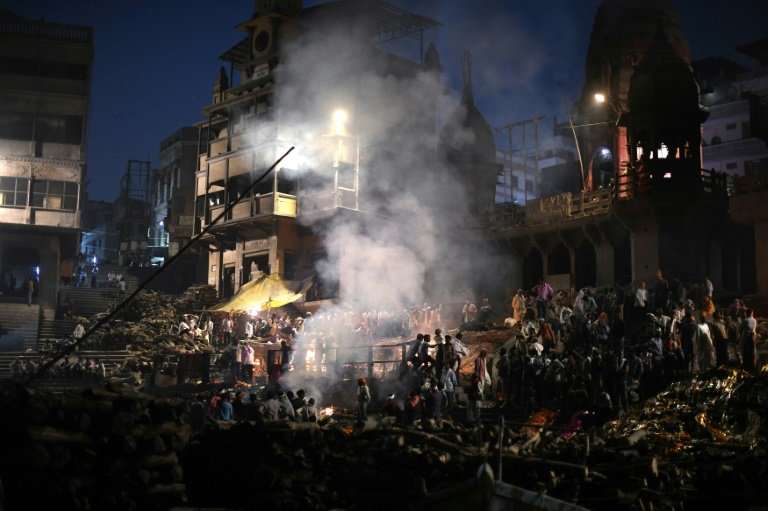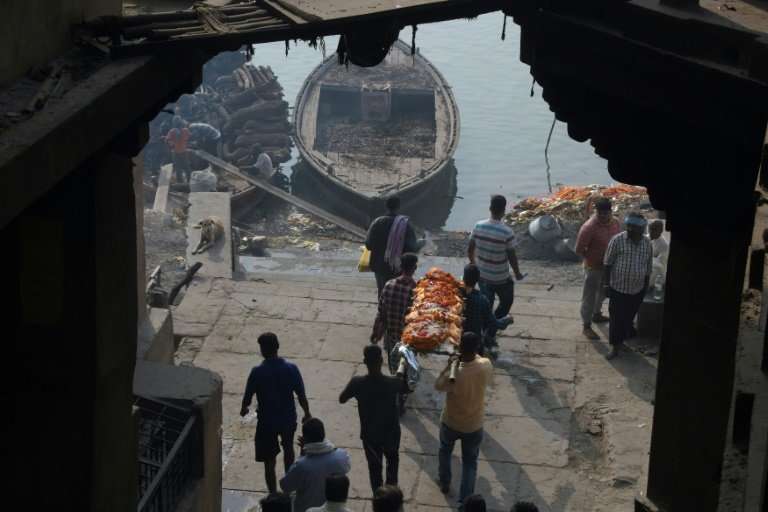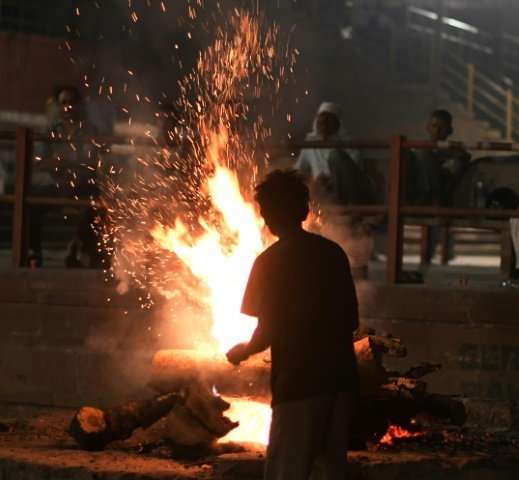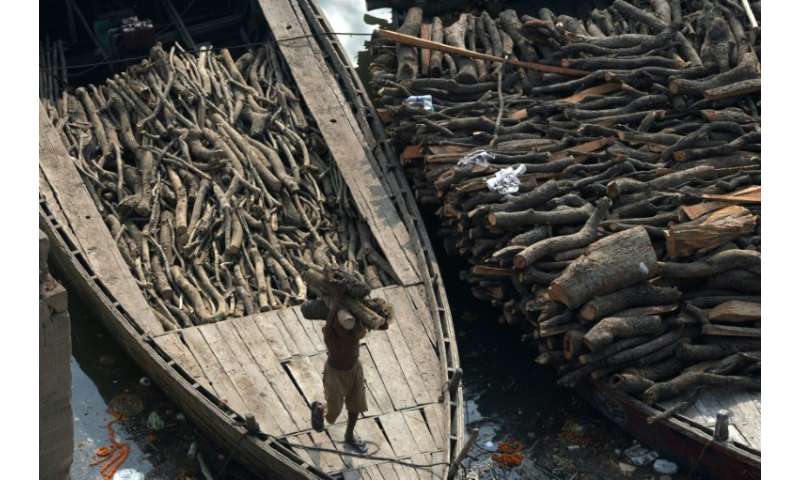Escaping death and rebirth on Varanasi's sacred riverbanks

Boats loaded with wood arrive almost constantly at the ghats of Varanasi for around 200 cremations per day on the banks of India's holy Ganges river.
Each pyre needs between 200 and 400 kilogrammes (440 and 880 pounds) of wood, meaning the sacred city in northern India burns through as much as 80 tonnes every day.
To reduce the volume used, as well as air and water pollution, authorities have tried to push the use of alternative burning materials such as cow-dung.
But without much success.
"People have to be sensitised about the emissions caused by wood burning. Only then can this issue be tackled," said Vivek Chattopadhyay, pollution expert at the Centre for Science and Environment.
For centuries Hindus have visited Varanasi to cremate their dead so that they can achieve "moksha", the release from the cycle of death and rebirth.
As the bodies wrapped in white shroud and marigold flowers turn to ash, the remains are collected and sprinkled in the river.
At the ghats, the Doms—caretakers of the cremation grounds—pass flaming torches to the families of the deceased, who ignite the wooden pyres dotting the riverside.
Anything encroaching on the tradition can set tempers flaring.

Electric crematoriums introduced in 1989 as part of the "Clean Ganga" action plan have not found many takers in spite of the lower cost—around $6 compared to $60-70—and being less polluting.
"Since Varanasi is a sacred city, people want to stick to the strict rituals and don't want to adopt these new methods of cremation," said Nitin Bansal, municipal commissioner of Varanasi.
On average only five to seven bodies are cremated every day in the electric crematoriums.
-

For centuries Hindus have visited Varanasi to cremate their dead so that they can achieve 'moksha', the release from the cycle of death and rebirth. -

Varanasi burns through as much as 80 tonnes of wood in cremations every day.
© 2018 AFP


















